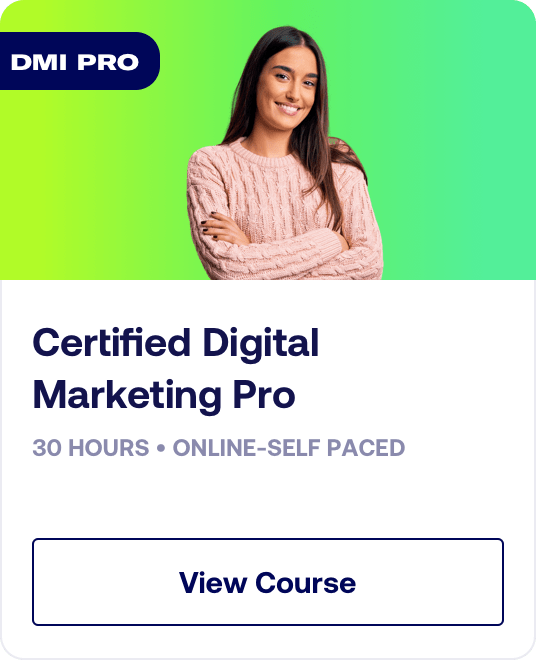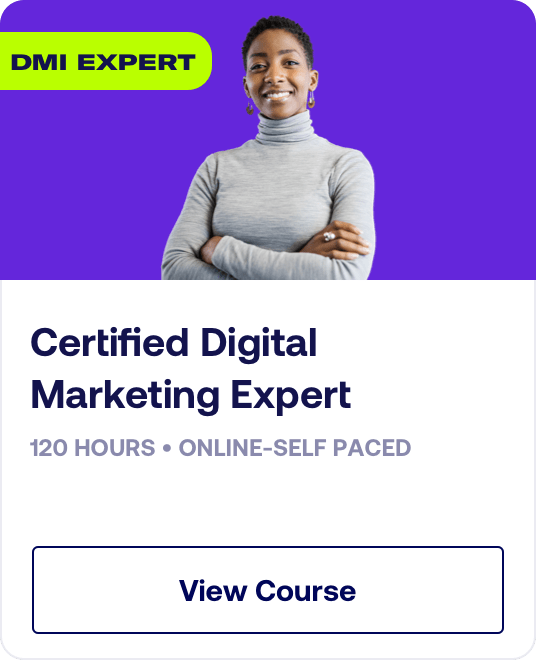Digital Marketing - Study Notes:
What is a social strategy?
Your social strategy – or social media strategy – is a set of practices and goals that guide your long-term social media objectives. Without a strategy, your social media activity could meander without purpose, and it would be difficult for you to assess whether it is being successful.
Establishing a social strategy ensures that your social media activities have a clear purpose, and you have a set of measurable outcomes to determine the success of your campaign. Your outcomes are aligned with your objectives, so you know what success should look like. Having a social strategy doesn’t guarantee success, but it does enable you to recognize it.
Developing a social strategy
Developing a social strategy involves six key steps: planning; setting objectives; researching; building; executing; and measuring. Let’s look at each step in more detail.
Planning
The first step is planning the social media strategy. Here, you need to get an understanding of the overall purpose of your social media campaigns. Why is social media important for your business? How does it fit into your overall company strategy? And how does it contribute to your business goals?
Setting objectives
Having established why you are using social media, you can then start to set your objectives for the strategy. This is a very important step because it will guide your entire campaign. Also, your objectives will enable you to measure the success of your strategy. As well as setting overall objectives, you can set key performance indicators, or KPIs. You need to ensure that your objectives and KPIs align with your other business goals. And remember that effective objectives and KPIs are SMART: specific; measurable; achievable; relevant; and time-bound.
Researching
The third step is conducting research. This is where you find out as much as possible about your audience, including who they are; where they live; what, where, and how they buy; and who they care about. It’s important to analyze what works well on social media, what types of social media your target audience engage with, and how you can combine the different elements of your social media activity into a comprehensive strategy. You also need to conduct social listening, to get a sense of what people are saying about your brand on social media. And don’t forget to monitor what your competitors are doing on social media. Your research can be a combination of social, desk, and other research types.
Building
Once you have researched your strategy, you can start building, or developing it. This is when you start putting your assets and resources in place. Decide what channels and resources you need to build those content assets, and what your allocated budget is.
Executing
The fifth step is executing the strategy. This is where you roll out the strategy and start engaging with your followers.
Measuring
The final step is easy to neglect in the rush of creative development, but it is essential to measure your overall strategy. After executing your strategy, you must measure its success and report on its performance. This information will enable you to adjust your strategy as necessary, and can also inform future social strategies. This is when you return to your objectives and KPIs to see whether they have been achieved. As data comes in, you can tweak your strategy by, for example, experimenting with different content types, uploading content at different times of the day, using differing hashtags, and focusing on high-performing audience segments.
Audience listening and tone of voice
For your campaign to be successful, it will have to resonate with your audience. This is why audience listening is so important. Monitor how people are reacting to your content, listen to their concerns, try to solve any issues they raise, while at all times demonstrating your brand personality.
However, be aware that you might need to modify your brand personality depending on the social media channel you are using. Some channels are more informal than others, for example. Again, by listening to your audience, you can assess whether your tone of voice is suitable for each social media channel audience. A word of caution, though. Although you can modify your brand personality to a degree from channel to channel, do ensure that you don’t compromise the consistency of your brand identity.
Building a social media plan
Remember, one of the key steps in creating a social media strategy is building out the plan. A social media plan has three core components.
Media strategy
The first component is your media strategy. This involves deciding which social media channels you will use and whether you will use any paid media opportunities. It is vital that you understand which social media channels your target audience is active on.
Content strategy
The second component is your content strategy. You need to decide which types of content you will post, and what tone you will use for the content. Audience listening is important here again, as you need to assess whether your content is relevant to your audience and prompting the reactions (likes, shares, comments, and calls to action, for example) that you were hoping for. Social media is a rich-media environment, and your posts can include text, images, audio, video, and so on. You need to understand which media types work best on different social media channels. And bear in mind the costs involved in developing different types of content.
Tactics
The third component is your tactics.
This involves deciding how often you will post, what mix of content types you will use, and what tactics you will use to engage your audience. For example, you might use polls or competitions to drive audience engagement.
Back to TopJulie Atherton
Julie is an award-winning digital strategist, with over 30 years’ experience. Having worked both agency and client-side, she has a wealth of knowledge on delivering marketing, brand and business strategy across almost every sector. In 2016, Julie set up Small Wonder. Drawing on her past experience, she now supports a wide range of businesses, from global brands, to educational organisations and social enterprises.She is the author of the book, Social Media Strategy which was a top read chosen by Thinkers360. You can find her on X and LinkedIn.

Clark Boyd
Clark Boyd is CEO and founder of marketing simulations company Novela. He is also a digital strategy consultant, author, and trainer. Over the last 12 years, he has devised and implemented international marketing strategies for brands including American Express, Adidas, and General Motors.
Today, Clark works with business schools at the University of Cambridge, Imperial College London, and Columbia University to design and deliver their executive-education courses on data analytics and digital marketing.
Clark is a certified Google trainer and runs Google workshops across Europe and the Middle East. This year, he has delivered keynote speeches at leadership events in Latin America, Europe, and the US. You can find him on X (formerly Twitter), LinkedIn, and Slideshare. He writes regularly on Medium and you can subscribe to his email newsletter, hi, tech.






